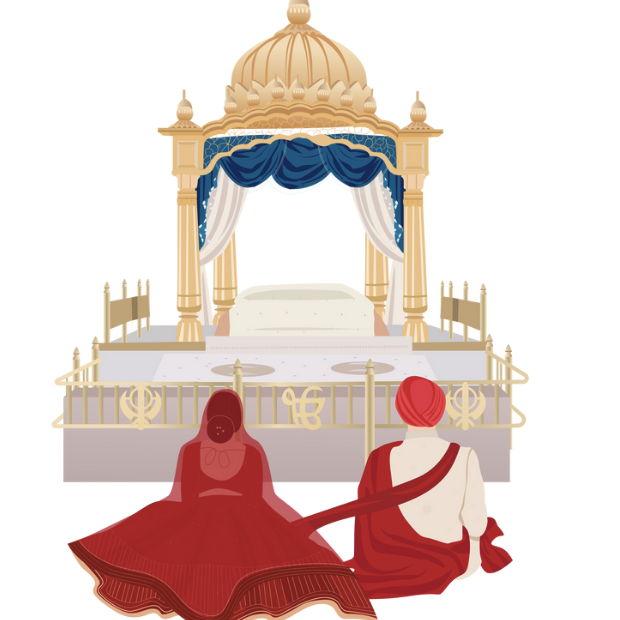

Anand Karaj & Hindu Ceremony

Anand Karaj
.
The Anand Karaj, meaning "Blissful Union," is the sacred Sikh wedding ceremony that symbolizes the spiritual and emotional bond between two souls. Rooted in love, equality, and devotion, this beautiful ceremony takes place in the presence of the Guru Granth Sahib, the eternal Sikh scripture. The ceremony begins with the Milni, a warm and heartfelt meeting of both families, followed by the couple’s entrance into the Gurdwara. The most significant part of the Anand Karaj is the Lavan, where the couple walks around the Guru Granth Sahib four times, each round representing a step toward a life of love, commitment, and spiritual growth. With each round, sacred hymns (Shabads) are recited, guiding the couple on their journey together. As prayers and blessings fill the air, the ceremony concludes with the Ardaas, a final prayer for a harmonious and blissful life ahead. The newlyweds then receive blessings from family and friends, followed by a joyous celebration of love, laughter, and togetherness.

Hindu Ceremony
.
A Hindu wedding is a beautiful and sacred union, rich in tradition and symbolism with rituals that honor love, commitment, and blessings from the divine. The ceremony begins with the Baraat, a joyful procession as the groom arrives, followed by the Jaimala, where the couple exchanges garlands as a symbol of mutual acceptance. The Kanyadaan is a heartfelt moment where the bride’s parents give her hand in marriage, entrusting her to the groom with love and blessings. The most significant part of the ceremony is the Saat Phrera or "Seven Steps," where the couple takes seven vows around the sacred fire, each step representing a promise for a life filled with trust, happiness, and togetherness. The groom then ties the Mangalsutra around the bride’s neck and applies Sindoor, marking their sacred bond. Surrounded by family and friends, the wedding concludes with blessings and celebrations—music, laughter, and joy marking the beginning of a beautiful journey together.